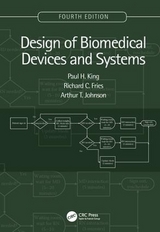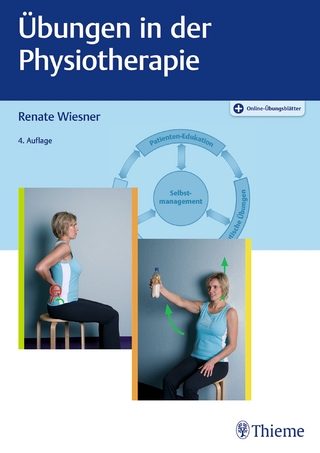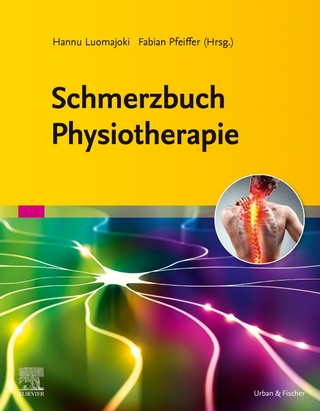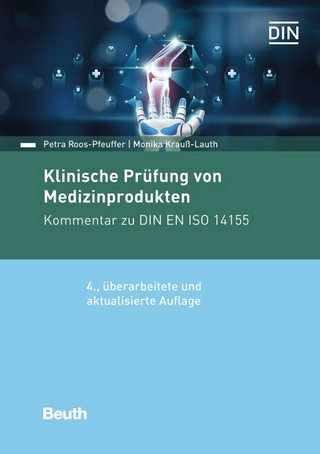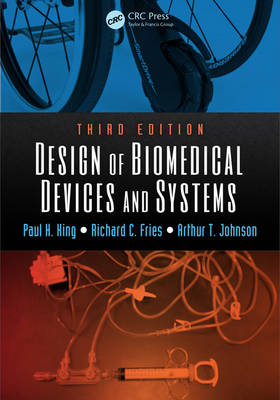
Design of Biomedical Devices and Systems
Crc Press Inc (Verlag)
978-1-4665-6913-3 (ISBN)
- Titel erscheint in neuer Auflage
- Artikel merken
Design of Biomedical Devices and Systems, Third Edition continues to provide a real-world approach to the design of biomedical engineering devices and/or systems. Bringing together information on the design and initiation of design projects from several sources, this edition strongly emphasizes and further clarifies the standards of design procedure. Following the best practices for conducting and completing a design project, it outlines the various steps in the design process in a basic, flexible, and logical order.
What’s New in the Third Edition:
This latest edition contains a new chapter on biological engineering design, a new chapter on the FDA regulations for items other than devices such as drugs, new end-of-chapter problems, new case studies, and a chapter on product development. It adds mathematical modeling tools, and provides new information on FDA regulations and standards, as well as clinical trials and sterilization methods.
Familiarizes the reader with medical devices, and their design, regulation, and use
Considers safety aspects of the devices
Contains an enhanced pedagogy
Provides an overview of basic design issues
Design of Biomedical Devices and Systems, Third Edition covers the design of biomedical engineering devices and/or systems, and is designed to support bioengineering and biomedical engineering students and novice engineers entering the medical device market.
Paul King, PhD, PE, attended Case Institute of Technology for his BS and MS and then obtained his PhD at Vanderbilt University in 1968 (mechanical engineering.) That same year, he became one of the founding members of the Department of Biomedical Engineering at Vanderbilt University. He developed and taught most of the early required coursework in the Department of Biomedical Engineering. In approximately 2001 he and coauthor Richard Fries published the first edition of the textbook Design of Biomedical Devices and Systems. This textbook is being used in multiple universities in the United States and abroad. Richard Fries, PE, CSQE, CRE, is a licensed professional engineer in the state of Wisconsin and certified by the American Society for Quality as a reliability engineer and a software quality engineer. He has degrees from Loyola University in Chicago and Marquette University in Milwaukee. He is co-inventor of patent 5,682,876, entitled "absorber switch locking device." He has authored eight books and chapters in several others on reliability and regulatory compliance. He has also written numerous articles in professional journals on hardware and software reliability, human factors, standards and regulations, and engineering education. Arthur T. Johnson attended Cornell University for his undergraduate and graduate degrees. His PhD was awarded in 1969. He joined the faculty of the University of Maryland in 1975 and was professor from 1986 until 2009, when he became professor emeritus. He has written three books: Biomechanics and Exercise Physiology, Biological Process Engineering, and Biology for Engineers. He has been most recently active in teaching electronic design, transport processes, and engineering in biology courses, and in working to continue development of the airflow perturbation device as a noninvasive measurement of respiratory resistance.
Introduction to Biomedical Engineering Design
What is Design?
What is the Thrust of this Text?
What Might Be Designed?
The Essentials of Design-Overview
Biomedical Engineering Design in Industrial Context
An Overview of the Industrial Design Process
How this text is Structured
The Real Purpose of this Text
Case Study
References
Fundamental Design Tools
Brainstorming and Idea Generation Techniques
Conventional Solution Searches
Function Analysis
Elementary Decision-Making Techniques
Objectives Trees
Introduction to Quality Function Deployment Diagrams
Introduction to Triz
Extended Triz Design Techniques
Case Study: Cancer Clinic Charting
Suggested Reading
Design Team Management, Reporting, and Documentation
Design Team Construction and Management (Industry Based)
Student Design Team Construction and Management
Reporting Techniques: Presentations, Posters, Reports, Websites
Introduction to Databases
Suggested Reading
Product Definition
What is a Medical Device?
The Product Definition Process
The QFD Process
Summary of QFD
Requirements, Design, Verification, and Validation
The Product Specification
Suggested Reading
Product Documentation
Documents
Records
A Comparison of the Medical Device Records
Suggested Reading
Product Development
Product Requirements
Design and Development Planning
System Requirements Specification
Design Input
Design Output
Formal Design Review
Design Verification
Design Validation
Design Transfer
Suggested Reading
Hardware Development Methods and Tools
Design for Six Sigma
Methodologies
Structure
Design for Six Sigma Tools
Component Derating
Safety Margin
Load Protection
Environmental Protection
Product Misuse
Reliability Prediction
Design for Variation
Design of Experiments
Design Changes
Design for Manufacturability
Design for Assembly
Design Reviews
Suggested Reading
Software Development Methods and Tools
Software Design Levels
Design Alternatives and Trade-Offs
Software Architecture
Choosing a Methodology
Structured Analysis
Object-Oriented Design
Choosing a Language
Software Risk Analysis
The Requirements Traceability Matrix
Software Review
Design Techniques
Performance Predictability and Design Simulation
Module Specifications
Coding
Design Support Tools
Design as the Basis for Verification and Validation Activity
Conclusion
Suggested Reading
Human Factors
What is Human Factors?
The Human Element in Human Factors Engineering
The Hardware Element in Human Factors
The Software Element in Human Factors
The Human Factors Process
Planning
Analysis
Conduct User Studies
Set Usability Goals
Design User Interface Concepts
Model the User Interface
Test the User Interface
Specify the User Interface
Additional Human Factors Design Considerations
Fitts's Law
Suggested Reading
Industrial Design
Set Usability Goals
Design User Interface Concepts
Model the User Interface
Test the User Interface
Specify the User Interface
Additional Industrial Design Considerations
Examples
Suggested Reading
Biomaterials and Material Testing
The FDA and Biocompatibility
International Regulatory Efforts
Device Category and Choice of Test Program
Preparation of Extracts
Biological Control Tests
Tests for Biological Evaluation
Alternative Test Methods
Other Considerations for Design
Materials Design Example
Endnote
Reference
Suggested Reading
Risk Analysis-Devices and Processes
Safety
Risk
Deciding on Acceptable Risk
Factors Important to Medical Device Risk Assessment
Risk Management
The Risk Management Process
Tools For Risk Estimation
Risk Analysis and Systems
Other Process Issues
References
Suggested Reading
Testing
Testing Defined
Parsing Test Requirements
Test Protocol
Test Methodology
Purpose of the Test
Failure Definition
Determining Sample Size and Test Length
Types of Testing
Highly Accelerated Stress Testing
Highly Accelerated Life Testing
Other Accelerated Testing
References
Suggested Reading
Analysis of Test Data
The Definition of Reliability
Types of Reliability
Failure Rate
Mean Time Between Failures
Reliability
Confidence Level
Confidence Limits
Minimum Life
Graphical Analysis
Suggested Reading
Product Liability and Accident Investigations
Product Liability Laws
Accident Reconstruction and Forensics
Conclusion
Reference
Suggested Reading
The FDA and Devices
History of Device Regulation
Device Classification
Registration and Listing
The (k) Process
Declaration of Conformance to a Recognized Standard
The PMA Application
IDE
Good Laboratory Practices
GMP
Human Factors
Design Control
The FDA and Software
Software Classification
The FDA Inspection
Advice on Dealing with the FDA
Suggested Reading
Food and Drug Administration History and Relevant Nondevice Regulations
A Brief History of the FDA Relevant to Food and Drugs
Drug Development
Drug Testing
FDA Postproduction Oversight and Enforcement
The Future of Drug Therapy?
The FDA and Combination Products
Veterinary Medicine
The FDA and Cosmetics
Summary and Conclusions
Suggested Reading
Biological Engineering Designs
What is a Biological System?
Special Issues When Dealing with Nonhuman Subjects
Unintended Consequences
Environmental Interactions
Biological Principles
Characteristics of Biomaterials
Design Objectives
Resistance Development
Information Sources
Useful Techniques
Regulations and Standards
Ethics
Biological Engineering Design Examples
Suggested Reading
International Regulations and Standards
Definition of a Medical Device
The Medical Device Directives
Software Standards and Regulations
Rest-of-World Standards
Suggested Reading
Intellectual Property: Patents, Copyrights, Trade Secrets, and Licensing
Patents
Copyrights
Trademarks
Trade Secrets
Licensing
Acknowledgment
Suggested Reading
Manufacturing and Quality Control
A History of GMPS
The GMP Regulation
Design for Manufacturability
Design for Assembly
Highly Accelerated Stress Screening
Highly Accelerated Stress Audit
The Manufacturing Process
Suggested Reading
Miscellaneous Issues
Introduction
Learning From Failure (and Lies)
Design for X
Universal Design
Prevention Through Design
Poka-Yoke
Product Life Issues
Product Testing Issues
References
Suggested Reading
Professional Issues
BME-Related Professional Societies
Standards-Setting Groups
Professional Engineering Licensure
Registration as a Professional Engineer
Rules of Professional Conduct
Codes of Ethics
Forensics and Consulting
Continuing Education
Concept to Product?
Introduction
Prepare Yourself Prior to any Further Developments
Find Funding Sources
Next Steps
Case Study: Pathfinder Technologies
NCIIA Examples
Development of Max Mobility Corp, Mark Richter, PHD, PE, Owner
Conclusion
Suggested Reading
Appendices
| Zusatzinfo | Approx. 50 equations; 42 Tables, black and white; 87 Illustrations, black and white |
|---|---|
| Verlagsort | Bosa Roca |
| Sprache | englisch |
| Maße | 178 x 254 mm |
| Gewicht | 1066 g |
| Themenwelt | Medizin / Pharmazie ► Physiotherapie / Ergotherapie ► Orthopädie |
| Technik ► Maschinenbau | |
| Technik ► Medizintechnik | |
| Technik ► Umwelttechnik / Biotechnologie | |
| ISBN-10 | 1-4665-6913-1 / 1466569131 |
| ISBN-13 | 978-1-4665-6913-3 / 9781466569133 |
| Zustand | Neuware |
| Informationen gemäß Produktsicherheitsverordnung (GPSR) | |
| Haben Sie eine Frage zum Produkt? |
aus dem Bereich
